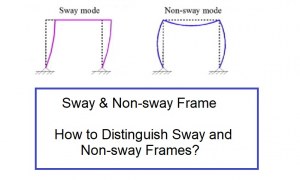🕑 Reading time: 1 minute
Contents:
Sealing of Various Types of Joint in Buildings
Protection systems of joints include the sealing of cracks, contraction (control) joints, expansion joints, and construction joints. Joint sealants in concrete minimize the intrusion of liquids, solids, or gases, and protect the concrete against damage. Sealing of various types of joints is discussed below:Sealing of Cracks in Buildings
Cracks are produced in concrete due to shrinkage, thermal changes, structural-related stresses, and long-term strain shortening. Before selecting a sealant, the reason for the cracking must be determined and moving cracks must be identified. In some cases, structural bonding of a crack may be required, whereas in other situations, restraint across the crack is to be avoided.Sealing of Contraction (control) Joints in Buildings
Contraction joints are intentional gaps / discontinuities provided to control crack locations to accommodate the contraction of concrete. The necessary plane of weakness may be formed by reducing the concrete cross section by tooling or saw cutting a joint, usually within 24 h. It must be sealed in such a way that it must allow contraction to occur.
Sealing of Expansion (isolation) Joints in Buildings
Expansion joints are made by providing a space over the entire cross section between abutting structural units. These are used to prevent crushing and distortion of abutting concrete structural units due to the transmission of compressive forces. These compressive forces may be developed by expansion, applied loads, or differential movements arising from the configuration of the structure or its settlement.
Sealing of Construction joints in Buildings
Construction joints are formed by interruptions in the placement of concrete or due to the positioning of precast units. Locations are usually predetermined so as to limit the work that can be done at one time to a convenient size. They may be required to function later as expansion or contraction joints, or they may be required to be firmly bonded together so as to maintain complete structural integrity. Construction joints may run horizontally or vertically depending on the placing sequence prescribed by the design of the structure.


